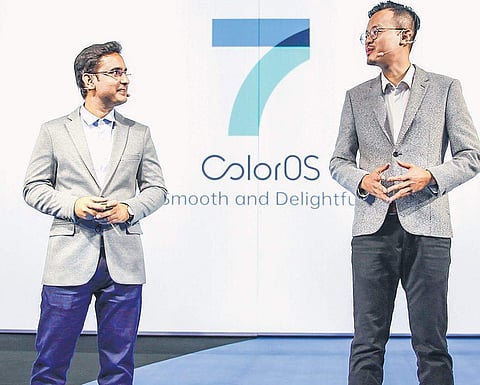

Chinese handset maker Oppo is deepening its localisation efforts and has launched its new-gen user interface, ColorOS 7, in India — a first-ever launch outside of China. With a host of localised feature, Oppo will use its Android-based interfce to give users a layer of customisations that help distinguish it from devices of other manufacturers.“Our team at Oppo headquarters with our R&D team in Hyderabad worked closely for one year to conceptualise and globally implement ColorOS 7,” said Martin Liu, senior strategy manager, Oppo ColorOS, adding India is a key market and Oppo will expand its localisation efforts to ensure that ColorOS is highly adapted to local users need.
Based on the latest Android 10, ColorOS 7 will be made available on more than 20 models including Reno, Find, F, K, and A-series models with the trial version set to run starting November 26 in India. A key feature is DocVault, which integrates the Digilocker service into ColorOS 7. It allows users to store photos, videos, audio, and other documents in a storage folder blocking access by third party apps.
“We are the first smartphone brand to partner with the government to extend the reach of Digilocker services through our smartphones and bring the ease of paperless governance to our 45 million plus users in the country,” said Manoj Kumar, senior principal engineer, Oppo ColorOS.
Experts say a holistic innovation comes only with a combination of hardware and software. According to Tarun Pathak, associate director at Counterpoint Technology Market Research, the next level of differentiation for handset makers would be software-driven service as hardware is no more in vogue. “In such a scenario, it makes more sense to step up localisation than even before as installed base of users grow. Other Chinese brands including Xiaomi, Vivo, OnePlus will be the key brands competing in this space.”
However, the software is a hard proposition to sell, explains Faisal Kawoosa, founder and senior analyst at TechArc. “Hardware give brands an ease of selling as it’s uncomplicated to show buyers the tangible differentiation. But, eventually the software will be valued as we evolve digitally.” In case of ColorOS, he said, one has to see what real value does localisation bring on the table. For instance, one can also install the DigiLocker from Google PlayStore, meaning users will value this localisation only if its of high value.
Smartphone market scenario
China’s Vivo holds 15.2 per cent share of the Indian smartphone market, according to IDC data. OPPO slipped to the fifth place in Q3 FY19. Moreover, it also became the second largest vendor in the fast-growing $300-500 segment on the back of its newly launched Reno 2 series